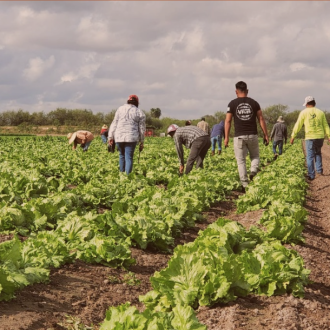
Written by: Julie Taylor, NFWM Executive Director
Photo Credit: U.S. Department of Agriculture
When I came to NFWM in 2015, the efforts to provide fair wages for farm workers focused on state efforts to achieve overtime pay, something other workers have had for years. The Fair Labor Standards Act of 1938 was written into federal law that workers who put in more than 40 hours a week would receive time and a half pay for their work, but it excluded farm workers and domestic workers. No updates to this law changed that reality. In 2016, a state law was passed in California that would phase in overtime pay for farm workers. Finally, after decades of working 12 to 16-hour days, often six days a week, farm workers in CA and eventually a few other states would get what they deserved.
See a map that Farmworker Justice created that includes state overtime laws. Some are still in the process of being phased in, while others have higher numbers of hours required before overtime will be paid. You can see at a glance how many states have overtime laws and whether or not they have exclusions for agricultural workers. There is a lot to read there, and it will be easy to see that there is a long way to go to get farm workers overtime. Some states’ overtime laws do not go into effect until they reach 60 hours a week. In other laws, the definition of employee is in question for agricultural workers. Other laws apply only to farms that employ 25 workers or more. Many states have overtime laws for workers, even though this is a federal law, but continue to carry the exclusion of farm workers originally included to help the law pass with Southern states continuing to struggle with the vestiges of slavery.
In many cases, the pushback of overtime laws, especially during the phase-in period, means that full implementation of how these laws were intended to operate never materialized. In many cases, growers and farm labor contractors who utilize these workers have intentionally increased the number of hired workers or their H-2A visas, so they only assign workers to 40-hour weeks. While that sounds decent, many workers who do this seasonal work seek additional hours to increase their total amount, especially because agricultural work is not year-round work. While they do not want to work without breaks, they do want the additional hours and the additional pay.
The struggle for farm workers today is that, before the laws went into effect, they worked longer hours, and while it was for the same hourly amount, their cumulative total was considerably more than it is now when they are limited to only 40 hours a week. The overtime law was meant to give them time and a half for the extra hours over 40 hours, but when they are limited to only 40 hours, they don’t make as much as they made when they had more hours. In many cases, some of the farm workers themselves are complaining that the new law prevents them from earning the money they need. Despite testimony to the contrary, growers and the agribusiness system are pleased to amplify these voices of descent because they hope to pay less for their labor costs and increase their bottom line. It is a vicious cycle.
There is the dilemma. For farm workers: work for more hours for less money? work only 40 hours? For growers: hire more workers to limit all of them to 40 hours a week? reconfigure the profit margin so that you can hire the same workers but pay 1.5 times more for hours worked over 40? In many cases, this is an incredible challenge. Perhaps two other groups need to be questioned. For companies/grocers who sell agricultural products: pay growers more for these products so the extra pay can be passed on to farm workers who do the harvest? For customers: pay more for fruits and vegetables in the groceries/restaurants? Especially for consumers, paying more for the very items that are most healthy for us can be challenging too.
NFWM will continue working alongside farm worker organizing groups to seek the same rights for farm workers as other workers in the U.S. A federal law, Fairness for Farm Workers Act (H.R. 3194/S. 4480), has been introduced in Congress but continues languishing in committee. Here are talking points from NFWM to address this with your legislator. A fact sheet by Farmworker Justice also offers helpful information. The bill was introduced in 2022, so it can only be addressed in its current form through the end of this year. It will have to be reintroduced in the next Congress. We will continue to promote this and share in the conversation of all sides to seek fair wages for farm workers. Join us in raising awareness about this important farm worker exclusion. Farm workers deserve justice.



